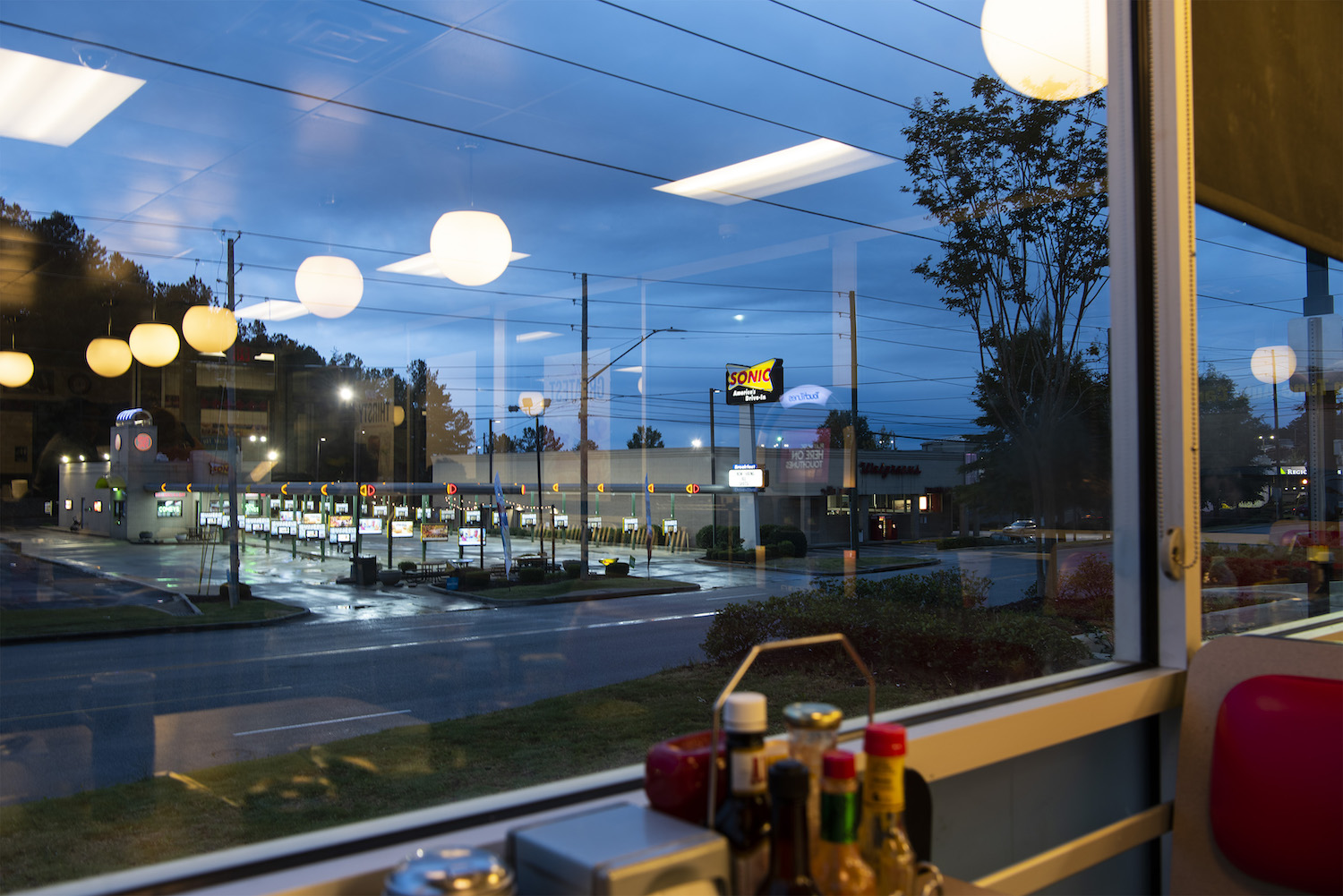“I am a photographer that is incredibly interested in the built environment. And not just what we build, but why we build it. What are the power dynamics? What does it say about what we value? I’ve long argued that you can look out of a window and see how we value each other as people, or if we value each other as people at all…”
When photographer Micah Cash first set out to take photos out of Waffle House windows across the Southeast, he was simply looking for a conceptual framework to talk about income inequality, social mobility, and the working class. What he ended up finding was a subject in itself — a regional restaurant chain that held uncanny weight in the lives of those who frequented it.
“What came out of the project was this… other half,” he notes. “Not quite nostalgia, but people’s true appreciation for a place where they can be themselves and where they were accepted and that accepted them amongst all the hardships in their lives.”
Cash is a Charlotte, North Carolina based photographer whose work has been shown in solo and group exhibitions throughout North America and Europe, with two published books to his name. His most recent project, Waffle House Vistas, caught our eye for how it examines the dreary, often repetitive modern American landscape during late-stage capitalism, and how that intersects with our current era in food. Inspired, we decided to chop it up with Micah over the phone for an in-depth discussion of the project. He also shared some of his favorite photos and moments from his travels to Waffle Houses across the American Southeast.
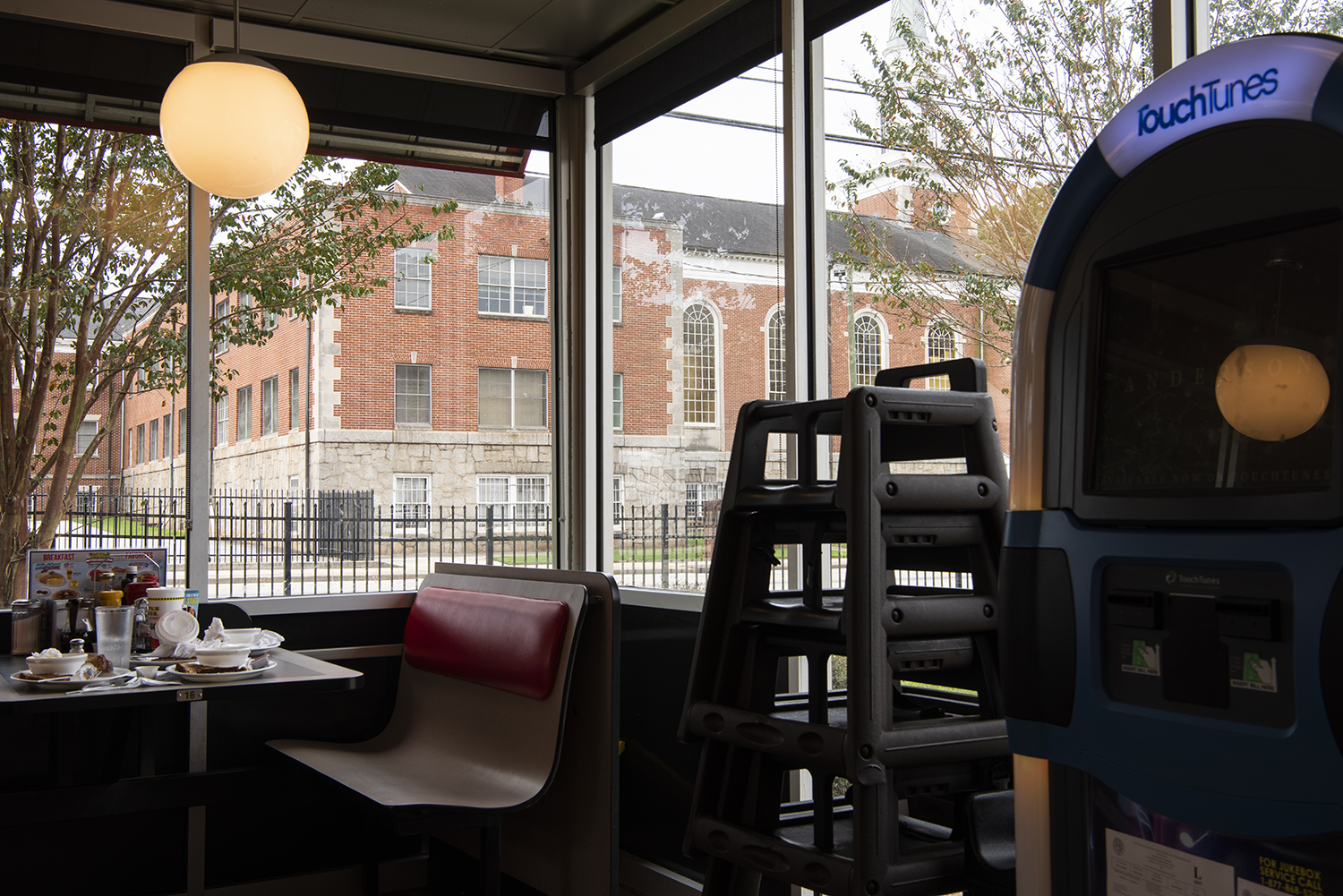
So… why Waffle Houses?
It came about for two reasons. One, from a conceptual side, I was looking for a framework and a metaphor to talk about income inequality, social mobility, and to make work about the working class, which is some segment of society that I certainly come from. I’ve been looking for a number of years, how to properly make work about it and start conversations about it, in a way that is respectful amongst everybody who’s a component of the working class and a part of the working class.
There’s a lot of stories that exist out in the world that are not really mine to tell, as a white dude. What is my role in telling certain stories and trying to bring as many voices to the table as possible? So that was part of it. The other part was Waffle House really seemed to fit that metaphor, but it also allowed me to be very conceptual in my artistic approach. So I could go to all of these different restaurants that were exactly the same, didn’t matter what city I went in, and people’s love for Waffle House seems to be very vast.
It’s a restaurant with a persona, for sure.
I was able to do the work I wanted to do in a place that is notorious for just a “live and let live attitude.” I joke that a lot of times, if I wanted to make this work in a McDonald’s, people would’ve probably thrown me out. But in a Waffle House, you can do whatever the hell you want, as long as you’re being respectful. That certainly was true. I can photograph the parking lot and no one is really going to care. People would certainly talk to me about it, but it’s not like people felt threatened by someone making photographs out of a window at Waffle House.
It was a nice space that not only hit all the points I wanted to talk about in terms of content, but also had a physical location that lends itself to the kind of work I like to make. Then the cultural phenomenon that is Waffle House. I don’t think this project would mean as much if I were photographing Hardee’s as it does with Waffle House.
I don’t think I really have a whole lot of memorable experiences in a Hardee’s, but I certainly can recall memorable experiences from Waffle House.
All the photos in the series concern Waffle Houses in the southeastern part of the United States. Why there? Is that a particular magnet for Waffle Houses or is that just an area that you wanted to explore?
I am from the Southeast, and I currently live in Charlotte, North Carolina, and I chose early on in this project to limit most of my travel to the Southeast. I wanted to keep this in the Southeastern proper because Waffle House is, I guess, usually known as a Southeastern chain, even though it exists in 25 states. So I wanted to play upon that. But also the discussion of it being so broad, I think I wouldn’t have been able to prove the same contents and fulfill the hypotheses if I had gone into Texas, I had gone into the stores in Arizona because I think looking outside, the built environment is most likely going to be the same. All that’s going to change is the geologic environment.
So you might have the mountains into the sea, but there’s still those two hotels and a McDonald’s out the window in Chattanooga, for instance, or something like that. I wanted to keep it regionalized, and it just felt tighter in that regard as a Southeastern chain that has a headquarters outside of Atlanta and a fast-food chain that most people, if you’re a Southern ex-pat, think of fondly when they think of their time in the South or coming back home.
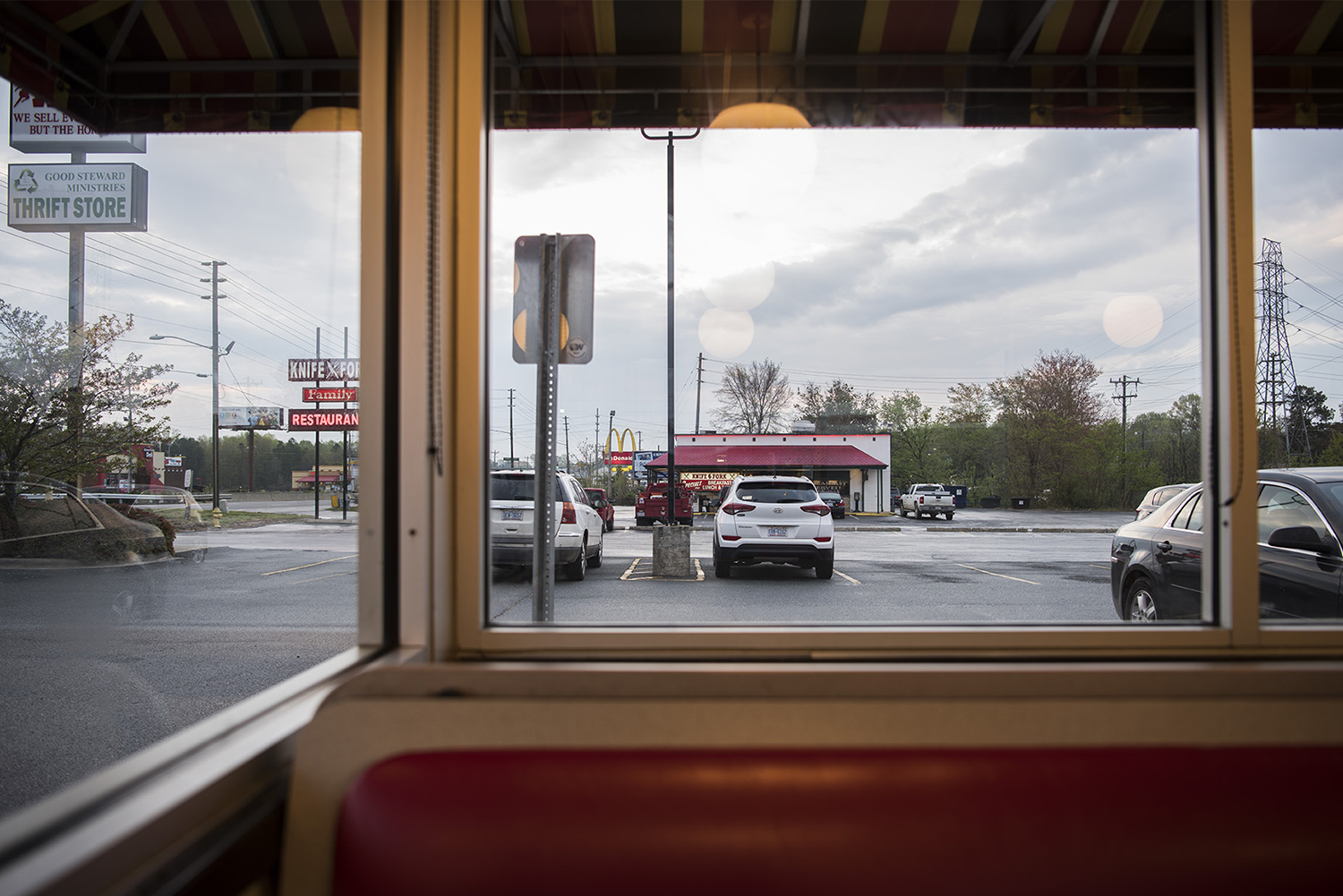
The point of view from your photos positions the viewer in the booth. What was the idea behind that?
That’s one of the components of the project that I am really the proudest about — because what I was able to do with the framing on each of these photographs and the repetition of it in many ways. That is by design, that I am making a photograph from that particular place. I wanted you, the viewer, to be in that place as well.
So they exist in multiple levels with certainly a point of view shot that is autobiographical. But when you enter that space as a viewer, you become the patron looking up and looking out over the vista from that table. I wanted it to also bring in lived experience, and I think the framing of it is a nice job, where if you enter these photographs visually, you can conjure the sights and the sounds and the smells of a roadside diner very easily, even if you’ve never been into a Waffle House.
If you have been into a Waffle House, you can conjure up your own experiences that you’ve had. So it places you in this very interesting space where you bring 40, 50% of the content of the photograph actually coming from your experience, and then you’re meeting me halfway. I think that was a really important tool for me to get people into photography — into these photographs — because that’s not always the case. Sometimes an artist can be very biased and very controlling.
In this case, I was very controlling. I dictated what you see, but I’m also forcing you to bring your life into these photographs to make them your own.
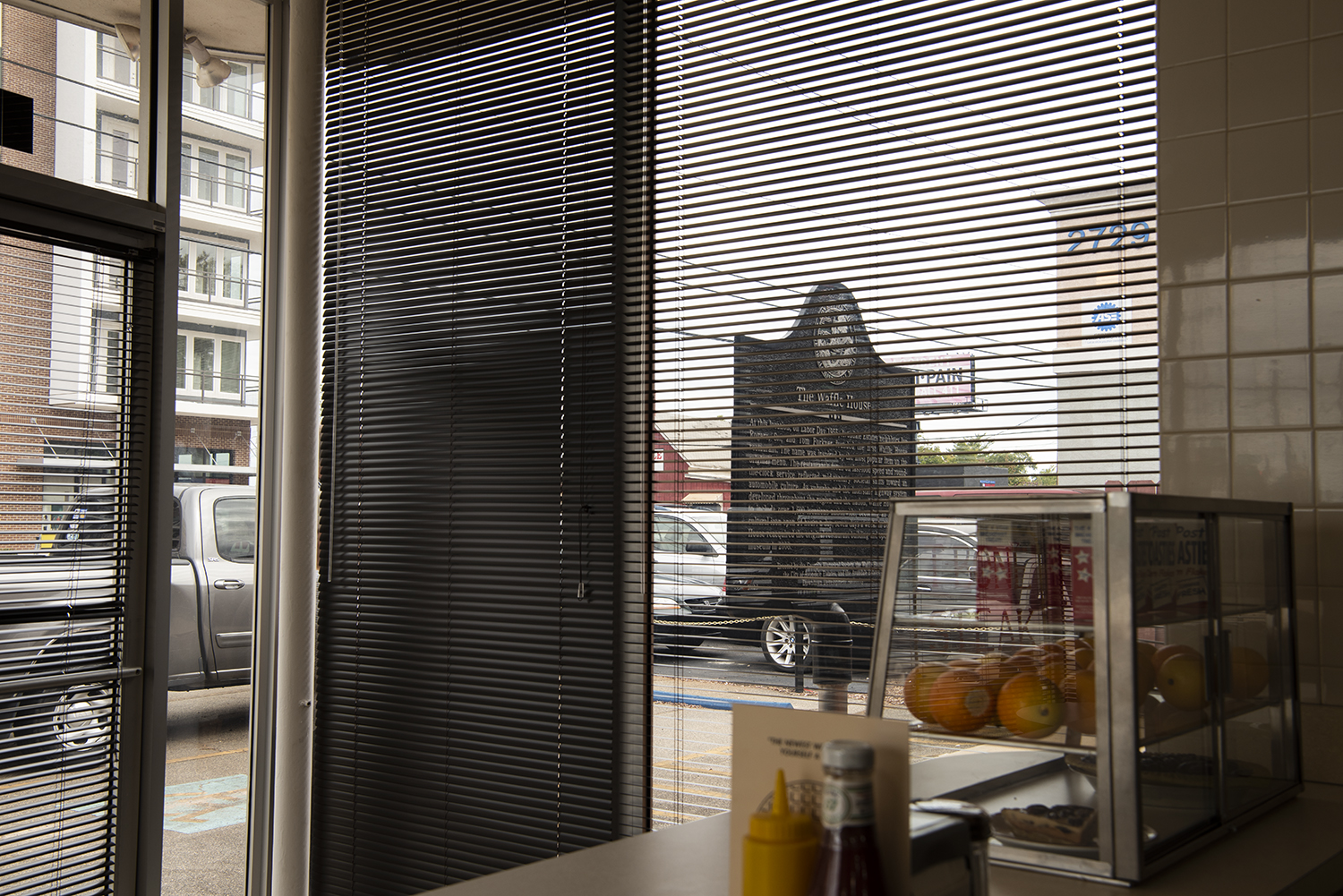
On that note, did you snap photos from the booths you were seated in? Did you ask for specific … Well, I could tell, based on the fact that sometimes the view is a wall or a car, that I don’t think you purposely chose these booths. So was that part of the concept as well, to see where you got seated?
I had a very strict regimen that I would do in order to maintain a level of authenticity. Most of them, if not all of them, are randomly entered. I’d be on the road. I would just say, “Oh, it’s been 45 minutes. Let me go here.”
Then sometimes I would say, “Well, I haven’t been to Nashville yet. Let me go get a couple of shots in some stores in Nashville.” But I would enter these restaurants and I would find a space to eat. They never really sit you in a Waffle House. You sit wherever there’s a space or where you feel comfortable.
So a lot of times, I would go into these spaces, and they would be full and I would take whatever space was available to me. If I would enter a restaurant at say, three in the afternoon, I could choose wherever I wanted. So I’d be a little bit more choosy in those spaces.
Then I would only make photographs from where I was seated. I wanted it to be authentic, in that regard. So if I was seated at one of the bars, I would turn around and photograph the wall Or photograph the parking lot. It would be a very mundane image. So the images would be random at times.
I would also eat at every restaurant. Usually, it would be a side of toast and some black coffee. That way, I would have a true Waffle House experience and just talk to the servers. If it was in the morning, I would get eggs or something. There are a couple of photographs where I was in that restaurant for so long because I was talking to either patrons or a waitstaff or the cooking staff, that I would get a little choosy. I would say, “You know what? I’m going to stand up and go over here.” That’s mainly just because the shot was too good. I just had to make that photograph.
But by and large, 95, 96% of them were photographed from wherever I was able to get a seat.
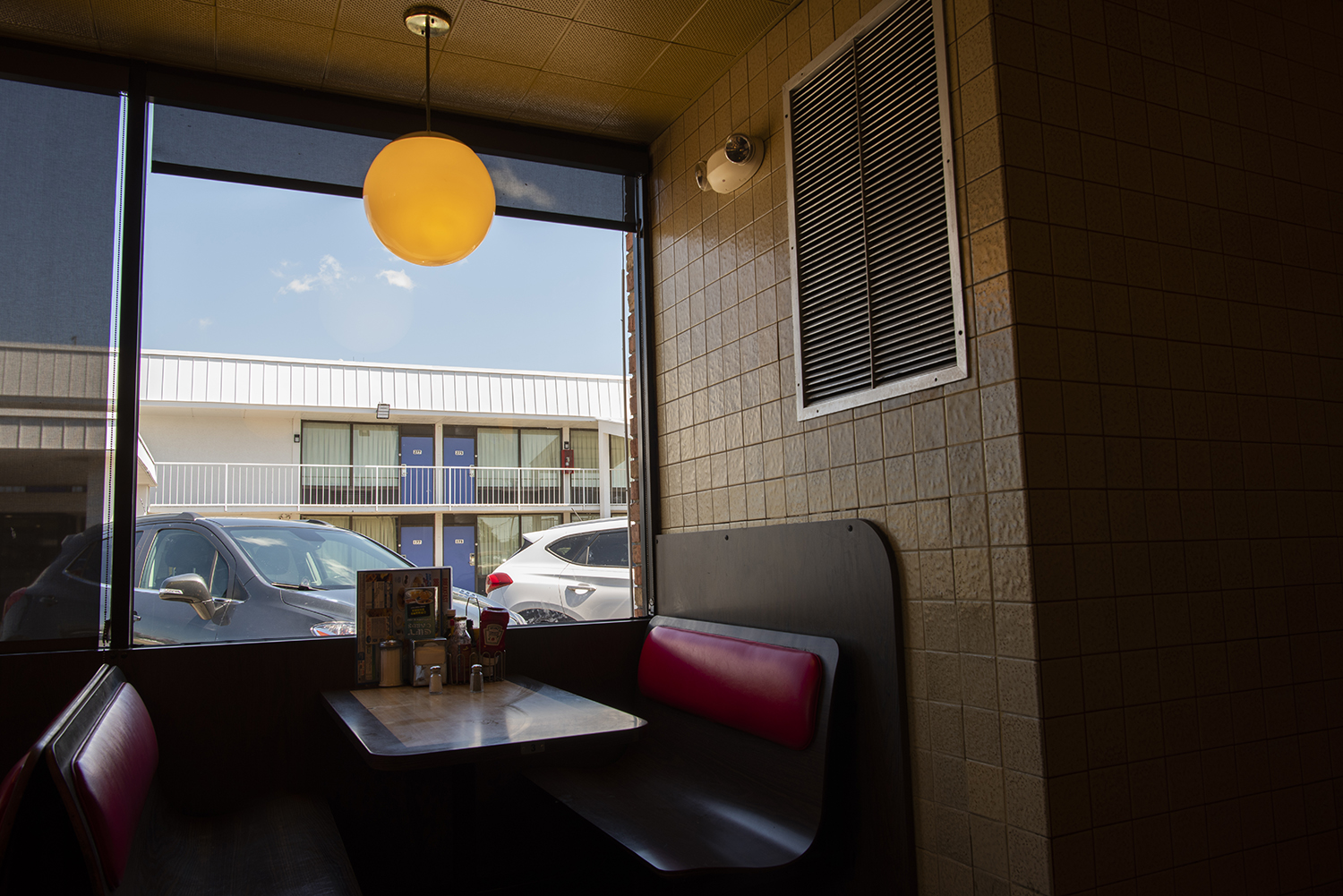
Some of the commonalities that pop out to me, obviously the red booths, because they’re all designed the same. But from outside of the windows, you see a lot of gas stations, hotels, other restaurant chains. I think McDonald’s pops up a couple of times.
What are the commonalities that pop up to you?
I am incredibly interested in the built environment and not just what we build, but why we build it. So what are the power dynamics? What does it say about what we value? I’ve long argued that you can look out of a window and see how we value each other as people, or if we value each other as people at all, or if we view each other as a commodity or a means to wealth or something in that regard.
So that discussion and that contemplation of architecture is interesting to me. What do I see out of Waffle House? Why does there seem to be Waffle Houses next to payday loan lenders, next to Dollar Generals next to hotels and motels, usually of the extended-stay variety? I can make some pretty reasonable hypotheses about that, in an educated way, in terms of how corporations serve different populations.
But looking out the window, those commonalities tended to shift right as we would think. So I photographed just as many restaurants in suburban locations as I did rural locations, as I did urban environments. Part of that was pushing back against the narrative that Waffle House is strictly a rural phenomenon. It’s not. It’s also not strictly a white rural phenomenon. The demographics across the map and the demographics in a Waffle House usually look like the demographics of America.
In America, there is a segment of our economy that is built to make money off the poor or off of people who might be in more precarious positions. You certainly see that, and that’s not a critique on Waffle House because I think providing fast food all hours of the day is a worthwhile endeavor, but it does overlap in a Venn diagram of some other ways that we build around them, and other business models that companies might have.
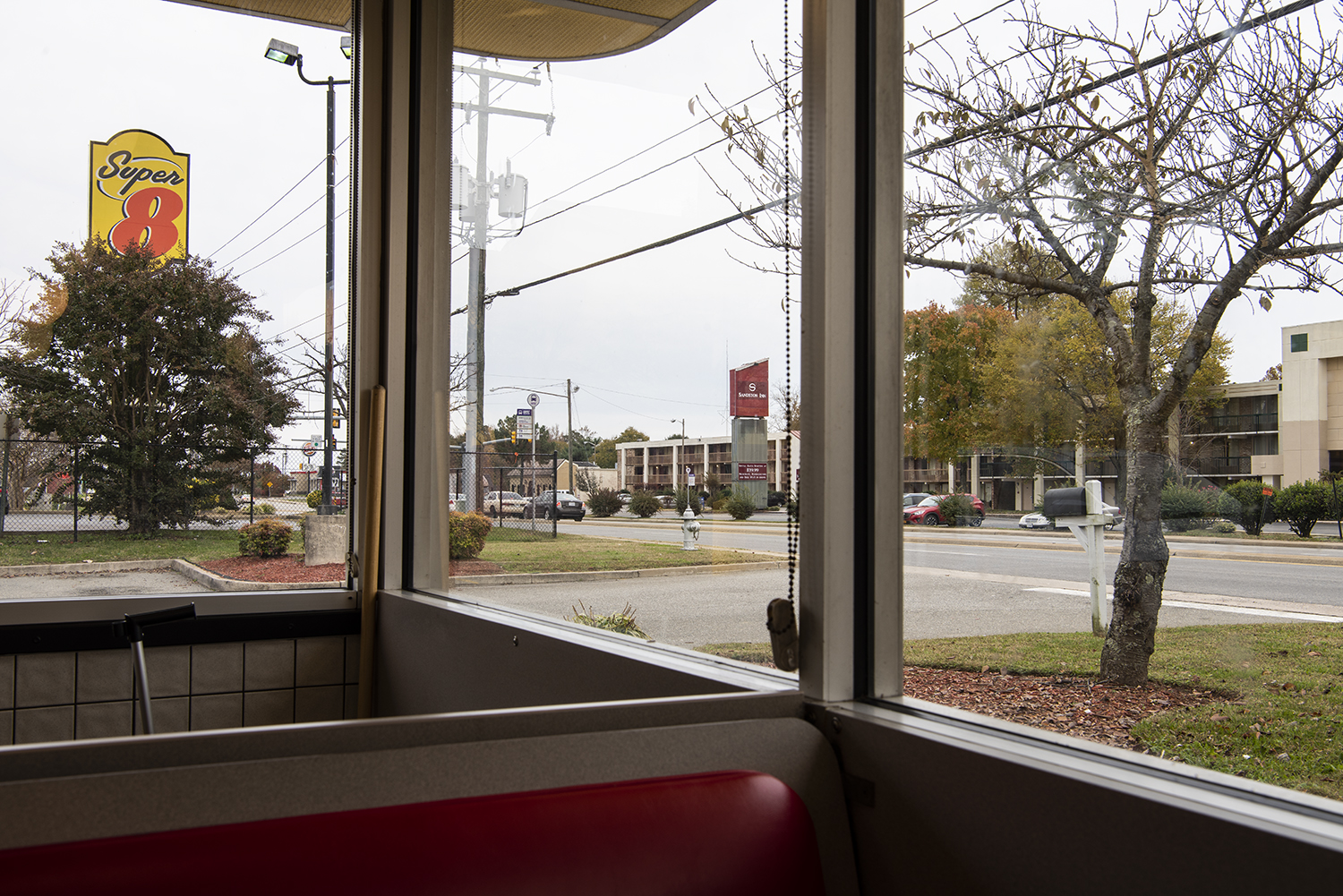
Is there a moment in this journey that sticks out to you as significant, be it a conversation or something that you witnessed?
Absolutely. I make a point in my essay specifically to talk about how Waffle House is not always positive, and certainly, in 2018, that wasn’t the case. There were a string of racial violence incidents, and that was difficult — making this work, thinking about what was going on. Fast food is also a stage where tensions in our culture boil over. So I want to acknowledge that it’s not always positive. However, most of the people I have spoken to and throughout the life of this project and in the years since the project has been complete, have had positive experiences.
I went to about 65 restaurants and never really had a negative experience. Some of the most positive experiences were when I was talking to people. They would come up to me whether they worked in the store or whether they were eating. They would say, “Why are you photographing the back of that store across the street?” Or “Why are you photographing the cars in the parking lot?”
I would tell them what I was doing, and then we would end up having an hour-long conversation about who they are, their biography, my biography. One gentleman, in particular, in Richmond, Virginia stands out. I was the only person in this store. It was a restaurant out by the airport. I had gone in at about 2:30, which is a great time to photograph in a Waffle House because you’re usually by yourself and it’s in the middle of shift change.
He and I just started chatting and he was younger, probably college age. I often teach as a college professor, adjunct. So I can relate to him as a college-age student. He had escaped some type of family situation in the Midwest and he didn’t elaborate, but it was clear that he needed a fresh start. So he really just packed his car up, and he drove out to Richmond and got a job at this Waffle House and was relocating his life.
What was really phenomenal about it is he had so much hope and he had so much optimism that he had made the right decision and that he was starting something new and was really looking forward to that next chapter in his life. That was actually really common with most people that I talked to. In this country, everybody works really hard. Everybody that I had talked to had this element of looking forward to when things would be easier for them and when the hard work would pay off.
That was really reassuring and incredibly heartfelt, and something that will stick with me. I’ve had a conversation similar to that with people over email, once the project was published. People reaching out to me and telling me what one particular Waffle House in their own town meant to them, and asking me if I do this again, “Will you go to that store and make a photograph for me, because I haven’t been to my home town in 20 years? But that one restaurant got me through high school. That one restaurant got me through college.”
I think that’s really astounding, the passion that a restaurant can have, that effect on people. I didn’t necessarily think that at all when I started this project. It was more me, a conceptual photographer, thinking about these big lofty issues in the built environment and income quality and economic stability. What came out of the project was this other half, which was not quite nostalgia, but people’s true appreciation for a place where they can be themselves, and where they were accepted and that accepted them amongst all the hardships in their lives.
That was awesome.
